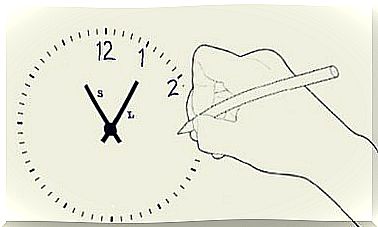3 Strategies For Dealing With Obsessive Thoughts

Dealing with obsessive thoughts is a daunting task. It requires tremendous willpower and discipline. It is a relentless fight against our own mental resources, often unconscious. Moreover, only those who fall victim to these types of ideas know how difficult it can be to turn away from them. Part of us wants to leave the enclosure, another part fights fiercely to keep everything the same.
The first step in dealing with obsessive thoughts is to understand what it is. These intrusive ideas are called by this name, which tend to stick to the mind and, in many cases, become recurrent. They come to us involuntarily. They just happen, cut other threads of thought, and we can’t get rid of them. Their content is generally intimidating. They speak of catastrophes and suffering. They generate fear.
Behind many of these ideas, there are unresolved conflicts, almost always related to an unconscious fault or, in any case, which has not been faced. The recurring idea is a form of punishment for something that has been done that is considered very wrong. However, this something escapes consciousness. Either way, it is possible to manage your obsessive thoughts so that they lose potency. There are three strategies for doing this.
1. The quicksand metaphor
A good way to deal with obsessive thoughts is to see them as if they are a quicksand trap. Imagine someone falling in a place like this. His instinct will lead him to want to get out of there as quickly as possible. However, if he tries to move, pushing one of his legs forward, the only thing he can do is sink deeper.
The same goes for obsessive thoughts. From this quicksand trap, one can only get out if the person calms down and accepts being in an area where every movement has to be calculated. If you try to lie down and float, calmly, it is very likely that you will gradually reach the shore.
In our case, it is better to do the same. You don’t have to fight directly against obsessive thoughts. We must not resist. Give your obsessive thinking 15 or 20 minutes of your time. Let it be there, observe it, detail all its contents. After that time is up, try to focus on something else for 15 or 20 minutes. Repeat the cycle until you feel better.

2. Maintain emotions, a way to deal with obsessive thoughts
If you want to deal with your obsessive thoughts properly, make an effort to maintain your emotions. Accept that you feel emotional discomfort for a while. If you admit to experiencing these emotions, especially anxiety, they will gradually dissipate.
Let them flow until the end. These types of emotions are depleted if you don’t interfere with them. To understand it better, it’s like having a speck or mosquito bite that stings you a lot. You feel it, but you decide not to scratch. Sure, it’s very irritating, but it ends up passing.
The discomfort will increase to a point. Then it will start to fade. The key is not to try to relieve yourself directly by scratching yourself. The same should be done with anxiety or any other negative emotion that accompanies obsessive thinking.

3. Recommended exercises
Remember that your goal is to deal with obsessive thoughts, not to keep them from appearing. Obsessions cannot be controlled with the mind, just like that. They require a deeper and more extensive process, usually through psychotherapy. That said, there are also a few little exercises that can help you:
- Talk about your obsession out loud for a minute. Don’t talk about your obsession, talk about it. You should do this as quickly as possible. It doesn’t matter if you don’t make a coherent speech. Consistency does not matter. In fact, you can only say one or a few words. For example, if you are obsessed with thieves entering your home, repeat “thieves-in-thieves-in”, quickly and continuously for a minute.
- Sing about your obsession. Find a melody you like and try to introduce a new word, which speaks of your obsession. Whenever these intrusive ideas come to your mind, start singing. Change the word and lyrics whenever you want.
- Draw your obsessions. Give them shape. Make up characters if necessary. Don’t just do any drawing off the cuff, but as best you can. Fill it with colors, ornaments, whatever you can imagine.

As we said from the start, dealing with obsessive thoughts is not easy. But if the strategies to achieve it are applied diligently, it is certainly possible to minimize its effects and frequency. To banish them, you will need therapeutic help. Do not hesitate to use it.









